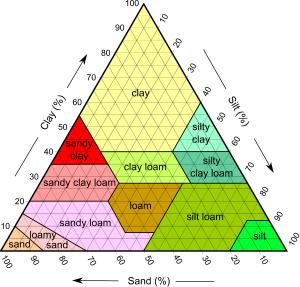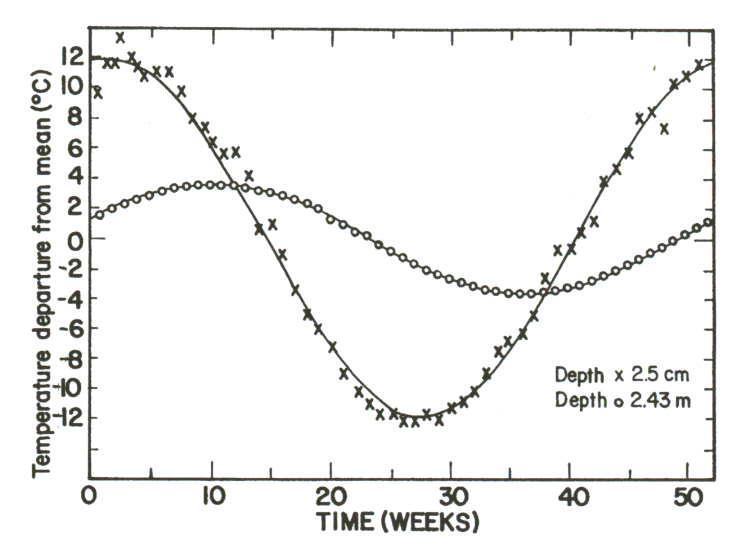(Still very much under construction)

The USDA classifies soil according to its percentage of Sand, Silt or Clay. Once the type of soil is determined, properties can be looked up.
There are three main types of soil particles; sand, silt and clay. These can be mixed in various percentages and have a strong impact on the properties of the soil. This is partially due to relative particle size. For instance, sand particles are the largest and leave gaps between them which allows water to pass thru. However, if those gaps are filled with smaller particles such as silt or clay, a more dense, less permeable soil results. In other ratios, silt (the finest particle) can actually coat and lubricate the sand, resulting in increased lateral forces against an earth sheltered building. Nearer the surface, organic mater also mixes in and adjusts the properties further. Other minerals and the presense of water can also severly adjust the properties.
The USDA (United States Department of Agriculture) has commissioned extensive soil studies and, for a given classification of soil, you can read about its texture, structure, density, porosity, consistency, color and even electrical resistivity… The one thing they don’t seem to publish regularly is its thermal resistance or specific heat capacity, the two things that an earth sheltered home designer is most interested in. In general, the R value stated for Soil is about 0.5resistance. I in order to be more sure about the actual numbers for the soil at my site, I am currently conducting an experiment which I will describe in detail on another page.

